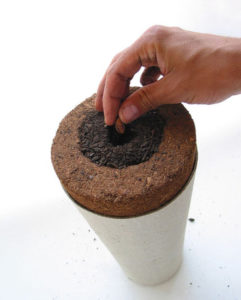Would You Consider a Green Burial?
Seventy-five years from now it’s very possible that Green Burials will replace embalming as “the traditional mode of disposition.” The environmental friendliness of green burials is one reason (not to mention the DIY spirit behind it) why I believe Americans may start to trend towards this mode.
The following is an older article from Apartment Therapy (that I found via a link from Connecting Directors) that provides some of the environmental reasoning behind green burials:

Scientific American says it well: “Modern western-world burial practices are arguably absurd, all things considered: We pack our dearly departed with synthetic preservatives and encase them in impenetrable coffins meant to defy the natural forces of decomposition that have been turning ashes to ashes and dust to dust for eons.”
Along with this, shall we call it, denial, there is a tremendous amount of waste in modern burials, at least in America.
According to National Geographic,
“American funerals are responsible each year for the felling of 30 million board feet of casket wood (some of which comes from tropical hardwoods), 90,000 tons of steel, 1.6 million tons of concrete for burial vaults, and 800,000 gallons of embalming fluid. Even cremation is an environmental horror story, with the incineration process emitting many a noxious substance, including dioxin, hydrochloric acid, sulfur dioxide, and climate-changing carbon dioxide.”
That’s heartbreaking. Death is hard enough to contemplate, but the last thing I want to do after I’m gone is make the world worse for everyone else still here. Sure, I’ve loved trees and steel and concrete in this life, but I certainly don’t need them once I’ve passed away. You guys enjoy them! And after trying so hard to be a good person, I really don’t want my final contribution to the world to be a noxious substance.
So, what to do? Scientific American lists a few options, including sustainably-harvested more-biodegradable coffins, trees instead of headstones, dry ice instead of embalming fluid, and specially-designed urns that can become part of ocean reefs.
The Huffington Post likewise lists horrifying statistics (formaldehyde causes cancer and prevents a corpse from “decomposing efficiently, and this slow rotting process favors sulfur-loving bacteria, which can harm nearby water sources”) and better, more affordable alternatives.
Two that caught my eye were a new technology that can turn a corpse into compost, and a bicycle hearse. Design Taxi featured Martín Azúa’s Bios Urn (shown above), a biodegradable urn that holds ashes and the tree seed of your choice (although keep in mind that according to the Huffington Post, “the energy used to cremate one body is equivalent to driving 4,800 miles”).
*****
Ignoring the acerbic language and tone of the article, would you consider a green burial?
